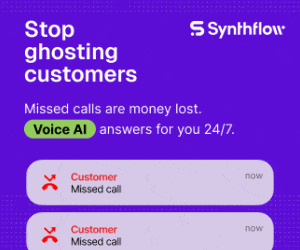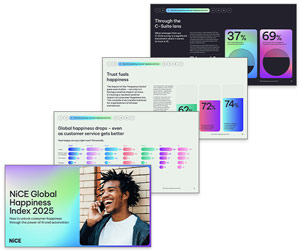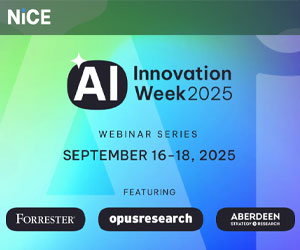Modern consumers often use multiple channels during their journey. To support this, many contact centre leaders take a strategic omnichannel approach to customer service, so channels are integrated and aligned, and customers can move between them with ease.
But with rapid changes in technological capabilities, coupled with changing customer expectations, leaders must now look to the future to stay ahead of the curve, so we asked our panel of experts, “What’s next for omnichannel?”.
Here’s what they said…
‘Omnichannel’ Will Give Way to ‘Intelligent Omnichannel’

Stokes
In the evolution of contact centres, we have seen the shift from multichannel to omnichannel and now to intelligent omnichannel.
With the recent increase in accessibility of AI, we’re likely to see the emergence of this as a natural part of the contact centre, replacing human resource for mundane tasks, allowing the centre to offer 24/7 support, and optimizing – even adding – resource to the centre using virtual agents.
So, when considering AI, it’s easier to consider it as a complement to many of your existing channels – instead of an additional channel to your centre.
Contributed by: Anna Stokes, Director – Global Product, Enghouse Interactive
Urgent Queries Will Be Proactively Prioritized in a Call Queue
With omnichannel, data organizations can begin to analyse trends across entire customer journeys. This data makes predictive and AI analytics capable of introducing proactive steps at numerous touchpoints.
This ensures a more comprehensive resolution, ensuring no question is overlooked and minimizing the potential for callbacks.
For example, proactive messaging via webchat can steer users to resources or articles before they need to reach out for agent support.
Not only that, but proactive prioritization of urgent queries in a call queue improves experiences and optimizes the use of agent time.
All this pre-emptive action helps avoid unnecessary and repeat inbound interactions, provide a higher standard of care, and reduce the cost to serve.
Contributed by: Grace Dawson, Junior Sales Executive, Odigo
Distinct Forecasting Algorithms Will Underpin the Success of Each Channel

Lim
Modern contact centres demand sophisticated forecasting, staffing calculations, and scheduling tailored to the unique requirements of various communication channels – such as phone, email, live chat, and social media.
This is where an omnichannel WFM solution can help, by ensuring optimal staffing with appropriately skilled agents across all platforms.
For instance, such systems employ distinct forecasting algorithms for each channel, accounting for the specific response times and interaction volumes expected. This precision ensures that resources are perfectly aligned with the demands of each channel.
Contributed by: Isabel Lim, Product Marketing Manager, injixo
Voice Biometrics Will Evolve to Protect Against Deepfakes
Protecting customers from fraud is paramount to the reputation of your contact centre and therefore a critical element of any omnichannel strategy.
Implementing voice recognition enables quality and control, ensuring that the customer is vetted, and sensitive data is securely managed between the centre and the customer.
The application of voice biometrics is continuously evolving, though, with the increase of deepfakes making this method susceptible to attack if not carefully managed.
Contributed by: Anna Stokes, Director – Global Product, Enghouse Interactive
Automated Summaries Will Keep Context Alive Across Numerous Channels

Buckley
Customer context always gets left on the cutting-room floor. Yes, the channels are there. Yes, they are linked up.
But they don’t represent a cohesive customer journey because the customers are essentially starting from scratch wherever they go.
The situation has improved a little with text-based channels. In voice, it is still dire. And that’s the channel with the important queries!
This has all led to one of the unsung but brilliant use cases for AI and automation, as transcription and summary makes it possible to keep the customer context alive across numerous channels, including voice. The next step in omnichannel is single-view, single context!
Contributed by: Pierce Buckley, CEO & Co-Founder, babelforce
AI-Driven Personalization Will Increase Customer Loyalty

Polyakova
The future of omnichannel lies in AI-driven personalization. Advanced AI algorithms will analyse customer data across all channels to provide personalized experiences in real time.
This level of personalization will enhance customer satisfaction and loyalty, making interactions more efficient and enjoyable.
As technology evolves, AI will become more intuitive, further refining the customer experience across all touchpoints.
Contributed by: Tatiana Polyakova, COO, MiaRec
Real-Time Analysis Will Pinpoint When to Switch From Self-Service to a Live Agent
The key to winning omnichannel is being able to connect a customer journey across all touchpoints.
AI is playing a large role in this, enabling organizations to manage interactions across every channel as well as orchestrate the transfer of an interaction from one channel to another with full context and a next-level ability to understand and resolve any needs that arise.
For example, if an interaction starts as a self-service digital chat, AI can analyse the interaction in real time to know when it might be time to switch the interaction to a live agent.
When this happens, consumers don’t want to repeat themselves either, and so AI equips organizations with efficient knowledge management, putting necessary information instantly in front of agents and bots to ensure a seamless hand-off.
Contributed by: Catherine Forino, Senior Product Marketing Manager, NICE
Customers Will Be Automatically Routed to the Best Available Agent

Booth
As customer expectations keep evolving, contact centres need to be ready to meet them wherever and whenever they engage.
That’s why having a unified customer engagement platform is so important – it lets organizations maintain context and continuity as interactions move between channels, reducing friction, and delivering a better experience.
By using AI and real-time data, contact centres can intelligently route customers to the best available agent based on their unique needs and preferences.
This leads to faster resolutions and helps build stronger relationships between customers and brands.
Contributed by: Ben Booth, CEO, MaxContact
Analytics Will Anticipate Customer Issues Before They Arise
Omnichannel strategies will evolve to include proactive customer engagement driven by advanced analytics.
Predictive analytics will enable brands to identify potential problems and reach out with solutions or offers, enhancing the customer experience and preventing issues that lead to repeat contacts.
Proactive engagement combined with comprehensive data analysis will build stronger customer relationships, demonstrating attentiveness and responsiveness, which drives loyalty and satisfaction.
Contributed by: Tatiana Polyakova, COO, MiaRec
Omnichannel Adoption Will Vary by Sector

Dawson
Omnichannel adoption varies largely across different sectors. ContactBabel DMG said on average across small, medium and large UK contact centres adoption is only 31%, with the biggest barrier being outdated contact centre tech that doesn’t support a ‘single view of truth’.
A lack of budget to invest in CX is also a big factor here, and as a result, somewhat predictably, the sectors with lowest adoption are housing, manufacturing and the public sector.
Omnichannel adoption is, however, much higher in retail contact centres, and retailers who don’t adopt omnichannel could lose between 10 and 30% in sales.
So, what’s next? For many, it will simply be taking that first omnichannel step. These later adopters will have suffered some damage to customer opinion but will benefit from advanced omnichannel platforms that now have even more to offer.
Contributed by: Grace Dawson, Junior Sales Executive, Odigo
For more great insights and advice from our panel of experts, read these articles next:
- Seeing Double? 10 Ways to Drive Down Repeat Contacts
- Top 10 Signs of Broken Processes (and How to Fix Them)
- Time-Saving Hacks for Quality Monitoring
Author: Robyn Coppell
Reviewed by: Xander Freeman
Published On: 17th Jun 2024 - Last modified: 18th Jun 2024
Read more about - Technology, Anna Stokes, babelforce, Ben Booth, Catherine Forino, Enghouse Interactive, Grace Dawson, Isabel Lim, MaxContact, MiaRec, NiCE, Odigo, Omnichannel, Peopleware, Pierce Buckley, Tatiana Polyakova, Top Story









































